Raised toilet seats offer more than physical support—they provide a renewed sense of independence and dignity. For seniors and individuals with limited mobility, simple daily tasks can present unexpected challenges, especially when using the bathroom safely and comfortably. A raised toilet seat can make all the difference, offering stability and security that empower users to manage independently without the risk of strains or falls. This level of comfort and support brings not only peace of mind but also restores confidence, turning an everyday activity into an experience of ease and self-reliance.
Beyond convenience, raised toilet seats are essential for improving overall quality of life. Whether you’re exploring solutions for a loved one or looking to regain a sense of autonomy, understanding these devices’ benefits is the first step to finding the right fit. This guide dives into the key features, various types, and practical tips for selecting the best raised toilet seat to enhance safety and self-esteem.
Contents
The Psychological Impact of Using Raised Toilet Seats
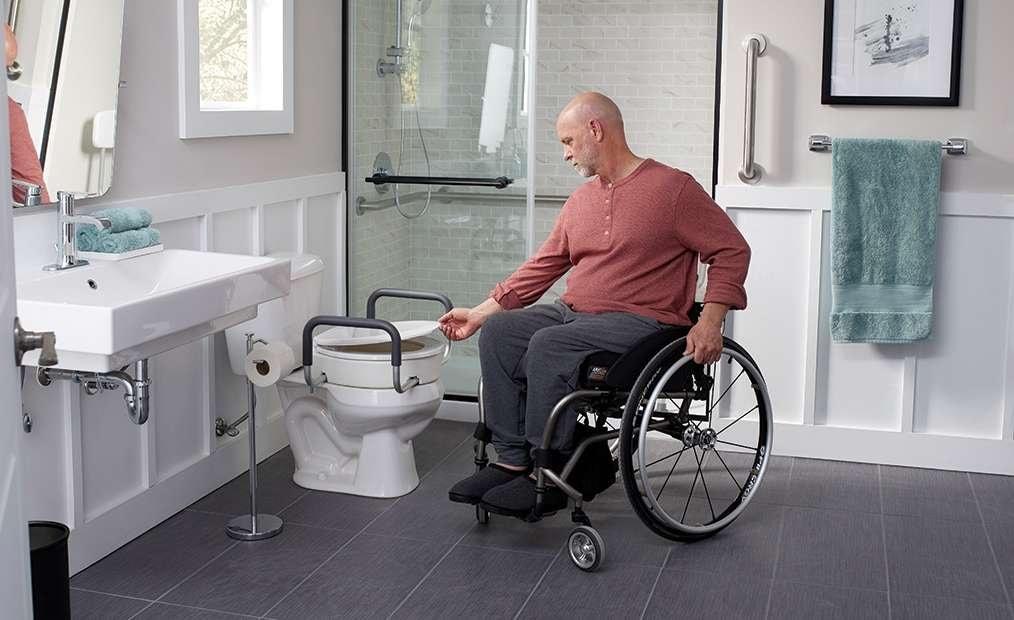
The bathroom is a private sanctuary where individuals perform their personal care routines—a space where independence and confidence are paramount for individuals of all ages and abilities. The introduction of raised toilet seats is a significant development in this personal space, designed to assist those with mobility challenges.
These assistive devices are not merely practical tools; they also play a crucial role in preserving users’ self-esteem and psychological well-being by enabling them to manage their bathroom activities safely and independently.
Raised toilet seats provide a subtle yet profound contribution to an individual’s sense of autonomy. The height adjustment reduces the strain associated with sitting down or standing up from a toilet, which can be particularly beneficial for the elderly, those with disabilities, or individuals recovering from surgery.
Beyond physical assistance, having control over such a basic aspect of life can diminish feelings of dependency on others, thereby fostering confidence and promoting a positive mental outlook. Moreover, the independence gained from using raised toilet seats can lead to a more active and engaged lifestyle, contributing to better health outcomes.
Key Takeaways
- These enhance bathroom independence, promoting confidence and self-reliance.
- These seats reduce strain during transfers, improving safety and physical comfort.
- They foster a sense of dignity by allowing users to handle personal care independently.
- These support better hygiene by making access easier for those with mobility issues.
- Choosing the right seat involves considering individual needs, such as height, stability, and support features.
Understanding Raised Toilet Seats
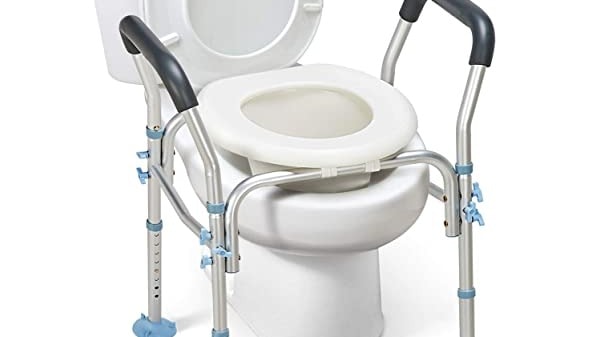
Raised toilet seats are a practical intervention for individuals facing mobility or balance challenges. They are designed to reduce the distance one must lower to sit on a standard toilet, facilitating greater independence and safety.
Design and Varieties of Raised Toilet Seats
This come in multiple designs, catering to various individual needs and preferences. Bubble-type raised toilet seats are a common variety, providing a simple and effective elevation solution.
They are designed to fit over the existing toilet bowl and are often equipped with locking mechanisms to ensure stability. Alternatively, there are toilet seats with arm supports or frames that aid users in transferring to and from the seat, enhancing user confidence through added support.
Ergonomics of Using Raised Toilet Seats
Efficient use of raised toilet seats depends on ergonomic design. An ergonomically well-designed seat will take into account the user’s ease of transfer, the height of elevation needed based on their physical requirements, and the comfort of the seating surface.
Raised toilet seats should allow for a natural seating position without causing strain on the user’s hips, knees, or lower back. They are invaluable for individuals with reduced muscle strength or joint pain as they can significantly decrease the effort required to sit down and stand up.
Psychological Benefits
Raised toilet seats extend beyond mere physical assistance; they are pivotal tools in fortifying the psychological well-being of individuals with mobility challenges. These devices empower users by bolstering their independence, confidence, and their perceptions of comfort and safety.
Fostering Independence
Raised toilet seats effectively minimize the difficulties of lowering to and rising from a standard toilet height. By aiding users in performing these actions independently, they typically experience a heightened sense of self-reliance. Research indicates a correlation between assistive bathroom products and increased autonomy in self-care activities.
Enhancing Confidence
An individual’s confidence can grow substantially when they are able to conduct personal hygiene tasks without assistance. The use of a raised toilet seat often leads to a reduction in the fear of falls and accidents, thus empowering users to feel more secure and aware of their ability to manage their care.
Improving Comfort and Safety Perceptions
Beyond physical ease, there is a significant psychological comfort that comes with feeling safer when using the bathroom facilities. The perception of safety can alleviate anxiety, contributing to a more relaxed and positive bathroom experience.
Raised toilet seats, sometimes outfitted with additional features like arm supports and grip bars, enhance this sense of safety, which in turn can impact overall well-being.
Impact on Daily Living
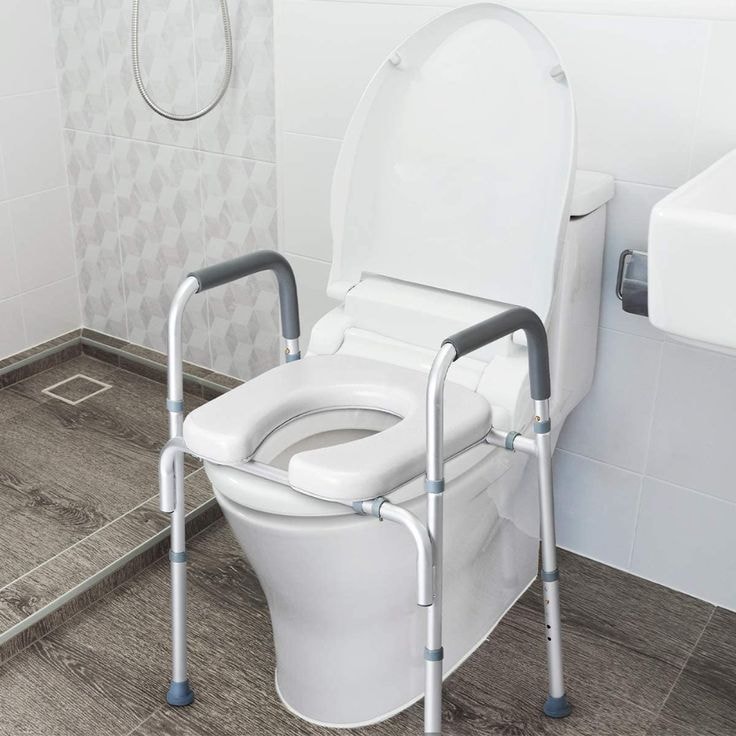
Raised toilet seats have become a significant adaptation for individuals with mobility issues. They contribute appreciably to the ease of completing daily self-care routines.
Effects on Personal Hygiene Routines
Influence on Privacy and Autonomy
Did You Know?
Check out this video on the top 5 best raised toilet seats of 2024.
By: TheTechMartus
Adaptation and Acceptance
The transition to using raised toilet seats significantly fosters independence and confidence in individuals with mobility issues. The psychological impact of this adaptation can be profound, but it requires acceptance and a willingness to embrace new routines.
Addressing Psychological Resistance
Initial Resistance is a natural response for many individuals confronting a change in their daily routine. Accepting the need for a raised toilet seat can be challenging psychologically, as it often signifies a loss of previous abilities.
It is essential to normalize the experience and address concerns directly, demonstrating that using assistive devices like a raised toilet seat is a proactive measure to maintain autonomy rather than a sign of dependency.
Strategies for Encouraging Use
- Education: Inform users about the benefits, such as enhanced home accessibility and safety, thus reducing the stigma.
- Personalization: Allow individuals to choose from different styles or colors of toilet seats to promote a sense of ownership.
- Gradual Introduction: Start with short periods of use, building up to full-time use to ease the psychological transition.
Clinical Perspectives
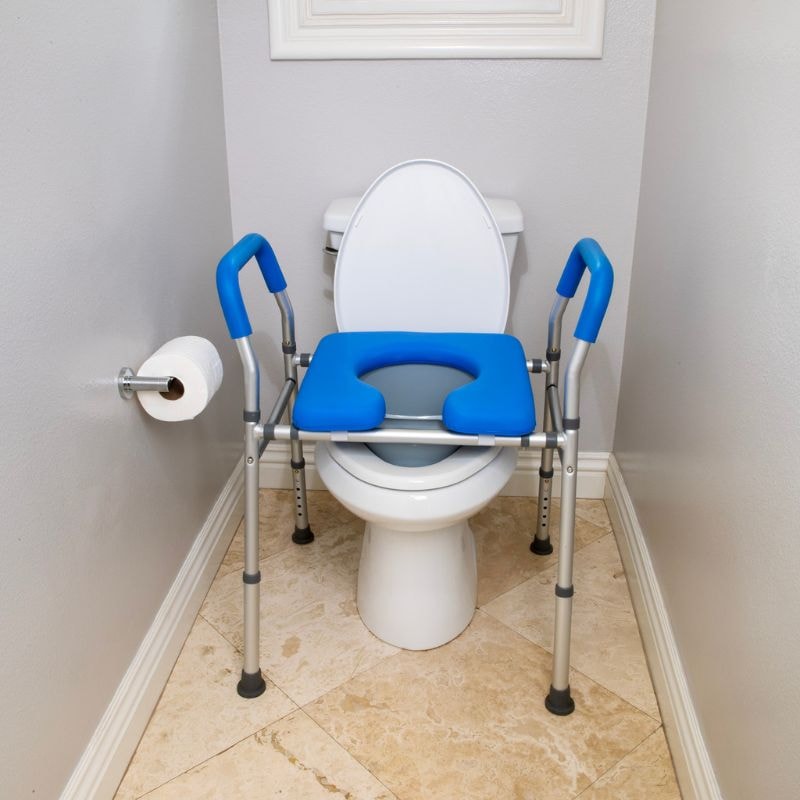
The usage of raised toilet seats is a niche yet important discussion in clinical settings. It highlights how a seemingly small intervention can lead to significant psychological benefits for patients.
Expert Views on Psychological Impacts
Experts agree that the introduction of raised toilet seat can notably reduce the fear of falling in elderly individuals or those with mobility issues.
This reduction in anxiety can lead to an increase in self-esteem and independence, as individuals find they require less assistance with what is a very private activity.
Clinical psychologists find that this autonomy can profoundly affect a patient’s overall mental well-being.
Therapeutic Implications of Raised Toilet Seats
From a therapeutic standpoint, raised toilet seats not only assist physically but also contribute to rehabilitation processes. Occupational therapists stress the importance of such aids in encouraging self-reliance during recovery.
They serve not just as tools for physical support but also as means for psychological reinforcement, fostering an individual’s confidence in performing daily tasks independently.
Case Studies
This section explores individual stories and documented experiences, providing insights into the tangible benefits raised toilet seats can bring to users’ lives.
User Experiences and Testimonials
Rehabilitation Success Stories
Alex’s Rehabilitation: Stroke survivor Alex relied on a raised toilet seat with arm support for recovery. His occupational therapist noted a significant boost in toilet transfer ability, crediting the physical support and psychological reassurance the equipment provided.
Lindsay’s Progress: After a severe leg injury, Lindsay used a height-adjustable raised toilet seat in her rehab. This device not only ensured safer bathroom visits but also aided in her overall recovery. Her physiotherapist highlighted that it helped maintain proper posture and reduce strain, which contributed to her successful mobility return.
Design Innovation and Future Outlook
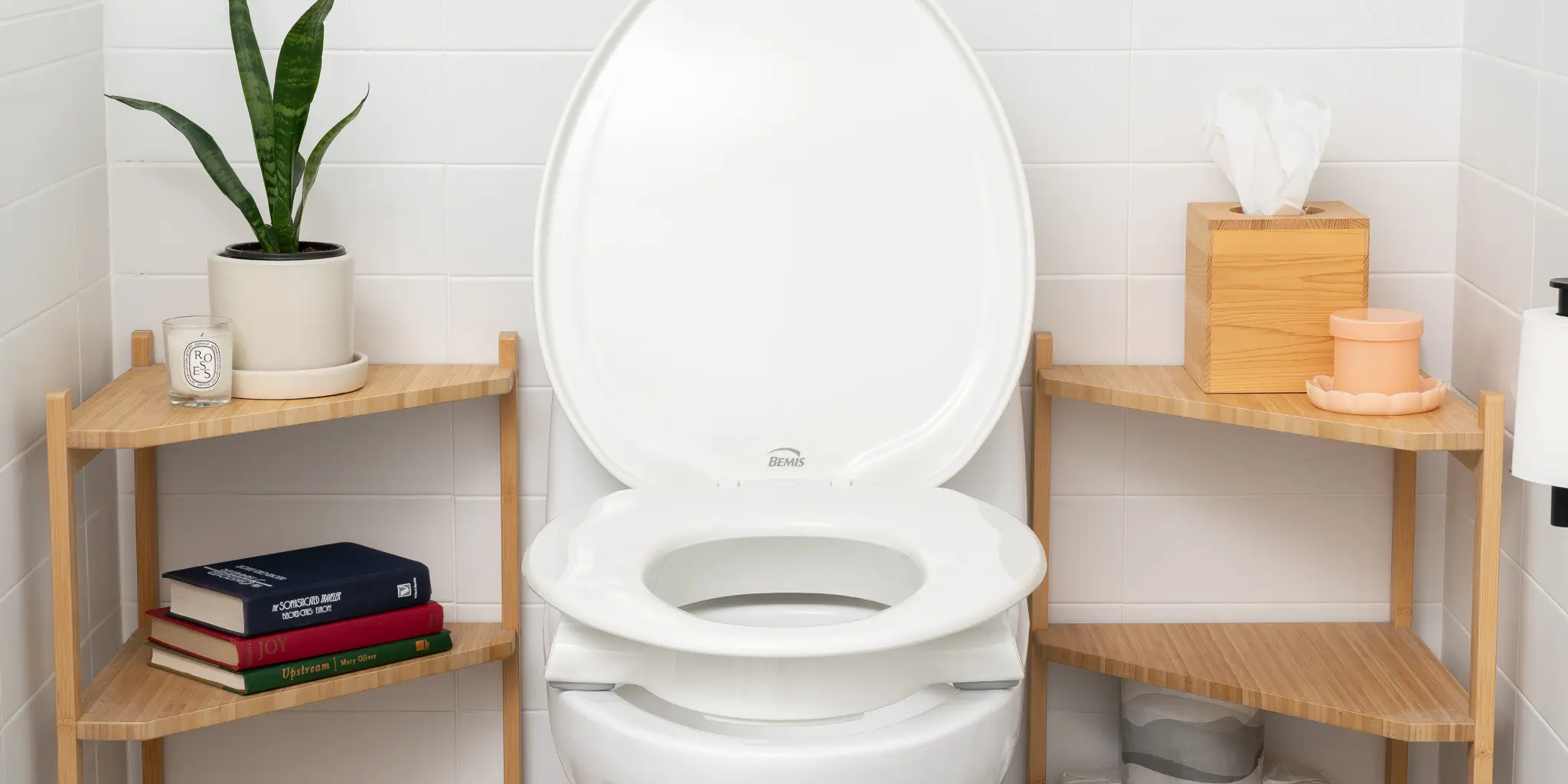
Innovations in raised toilet seat technology foster enhanced functionality and user experience, while future trends point towards wider acceptance driven by demographic shifts and technological integration.
Advancements in Raised Toilet Seat Technology
Ergonomic Designs: Manufacturers are focusing on ergonomic improvements to ensure comfort and ease of use for raised toilet seats. These designs consider the shape of the body and strive to reduce the physical strain associated with using the toilet. For example, some seats now feature contoured designs to improve postural support.
Smart Features: Intelligent toilet seats are being developed with integrated technologies to track health metrics. As illustrated by a study exploring intelligent toilet seats for older adults, these innovations can potentially monitor vital health data, fostering proactive healthcare management amongst users.
Material Enhancements: The choice of materials for raised toilet seats is evolving, with a focus on durability, cleanliness, and skin-friendly properties. Antimicrobial coatings and high-strength composites ensure a hygienic and long-lasting product.
Predicting Future Trends in User Acceptance
Demographics: As the global population ages, there is likely to be an increased demand for products that cater to the needs of older adults, which includes raised toilet seats. This can lead to normalizing their use, removing any stigma around such aids and promoting their integration into everyday life.
Integration into Smart Homes: With smart home technology becoming more prevalent, raised toilet seats with health monitoring are expected to connect seamlessly with other devices. This integration will likely enhance user acceptance, offering a unified and user-friendly health management system within the comfort of one’s bathroom.
Dive into this video to see what makes a great toilet seat riser and factors to keep in mind.
By: EquipMeOT
Empowering Independence: The Benefits of Raised Toilet Seats for Mobility and Confidence
Frequently Asked Questions
Raised toilet seats are a practical aid for individuals with mobility issues, providing a means to retain autonomy and increase safety in the bathroom.
How Can Raised Toilet Seats Enhance the Feeling of Independence for Those With Mobility Challenges?
Raised toilet seats allow those with mobility challenges to use the bathroom without assistance. The ease of transferring on and off a higher seat helps individuals perform self-care tasks independently.
What Role Do Elevated Toilet Seats Play in Increasing User Confidence and Safety in the Bathroom?
Elevated toilet seats ensure a shorter distance to stand or sit, which reduces strain on the legs and knees. This fosters a sense of confidence and stability that promotes bathroom safety.
Are There Any Psychological Benefits for Elderly Individuals Using a Raised Toilet Seat?
The use of a raised toilet seat can lead to fewer instances of falls, which in turn can decrease anxiety related to bathroom activities. This improves psychological well-being for elderly users by fostering a sense of self-reliance.
How Does Using a Raised Toilet Seat Assist Individuals With Disabilities in Maintaining Better Hygiene?
The adjusted height of a raised toilet seat often allows for easier access to cleanliness after toileting. This helps individuals with disabilities maintain better hygiene and dignity.
What Are the Considerations for Choosing the Right Type of Raised Toilet Seat for a Person's Specific Needs?
Selecting the right raised toilet seat involves considering the user’s mobility level, bathroom space, and toilet shape. Features such as arm supports, adjustability, and attachment styles are crucial to meet a person’s specific requirements.





